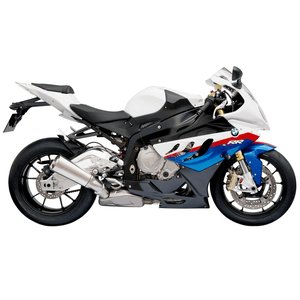BMW S 1000 RR (2008–2014): A Superbike That Redefined Expectations 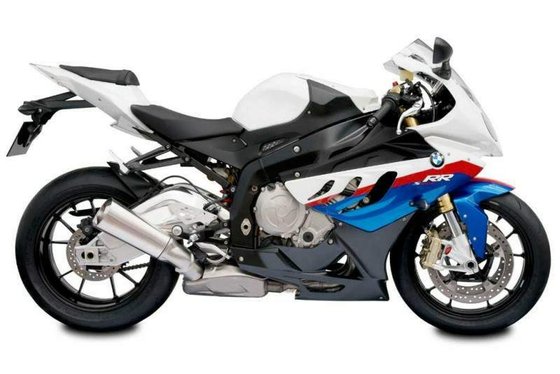
When BMW Motorrad unveiled the S 1000 RR in 2009, it wasn’t just launching a motorcycle—it was declaring war on the established order of liter-class superbikes. For a brand synonymous with boxer engines and touring prowess, the S 1000 RR was a daring leap into uncharted territory. Over its six-year production run, this Bavarian beast became a benchmark for power, technology, and track-ready performance. Let’s dive into what made this generation a legend.
Design: Form Follows Fury 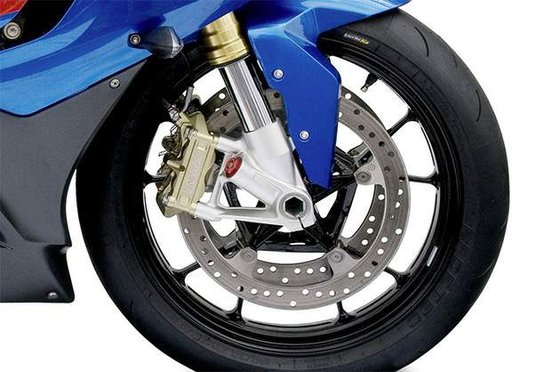
The S 1000 RR’s design was a deliberate departure from BMW’s traditional aesthetic. Its asymmetrical front fascia—with a sharp, angular headlight on one side and a rounded unit on the other—polarized purists but screamed purpose. The aggressive stance, with a steep 66.1° steering head angle and a wheelbase of 1,422 mm (56 in), prioritized agility over elegance.
The chassis combined a lightweight aluminum bridge frame (183 kg/403 lbs dry weight) with a load-bearing engine, a first for BMW. While the asymmetrical bodywork drew stares, it wasn’t just for show: the right-side "gills" channeled air to cool the radiator, while the left-side intake fed the ram-air system. Optional carbon fiber fairings (on special editions like the Carbon Edition) shaved weight further, emphasizing BMW’s race-bred ethos.
Performance: The Physics-Defying Inline-Four 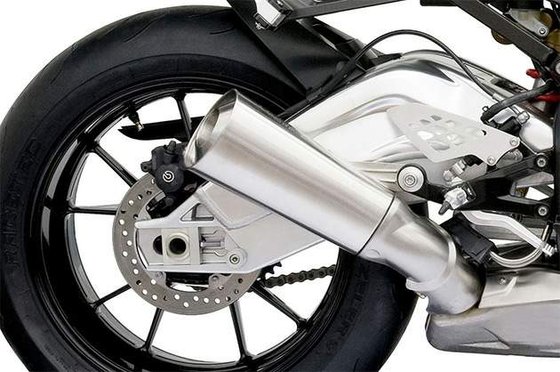
At the heart of the S 1000 RR lay a 999cc DOHC inline-four engine that borrowed tech from BMW’s Formula 1 program. Key innovations included: - Titanium valves and finger followers: Reduced reciprocating mass for a sky-high 14,200 rpm redline. - Variable-length intake tracts: Shorter stacks at high RPM for peak power (193 hp @ 13,000 rpm) and longer ones at mid-range for torque (112 Nm/82.6 lb-ft @ 9,750 rpm). - Akrapović exhaust: Optional systems unlocked a broader torque curve, adding 10% mid-range grunt in some configurations.
Acceleration & Speed
- 0–100 km/h (0–62 mph): 3.1 seconds
- Top speed: 299 km/h (186 mph)
- ¼-mile: 10.2 seconds @ 240 km/h (149 mph)
On the track, the RR felt like a controlled explosion. Journalists at Portugal’s Portimão Circuit noted its ability to “loft the front wheel effortlessly in third gear” while remaining composed under braking. The engine’s character evolved across riding modes—from Rain mode’s neutered 150 hp to Slick mode’s unfiltered rage.
Electronics: The Brain Behind the Brawn 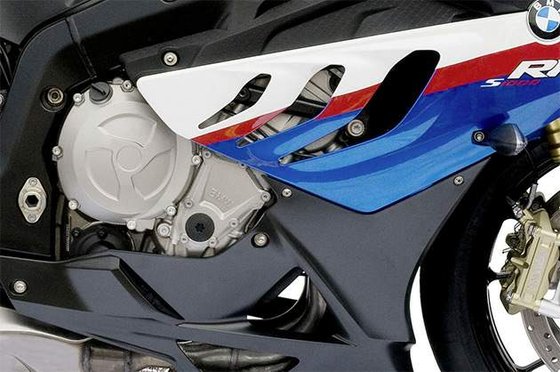
The S 1000 RR wasn’t just raw power—it was a tech showcase. Key features included:
Dynamic Traction Control (DTC)
- Lean-angle sensitivity: Adjusted power delivery based on bank angle (up to 60°).
- Wheelie control: Allowed brief lift in Slick mode but reined in excess.
- Four modes: Rain (150 hp), Sport, Race, and Slick (193 hp with minimal intervention).
Race ABS
- Partially integral system: Linked front/rear brakes but allowed rear-wheel lift under hard braking.
- Track-focused calibration: Disengageable for purists.
Gear Shift Assistant
- Clutchless upshifts with near-instant throttle response, even at full tilt.
Riders praised the electronics for their transparency. As one tester put it: “The DTC isn’t a nanny—it’s a co-pilot that lets you flirt with the edge without crossing it.”
Riding Experience: Track Weapon, Street Sleeper? 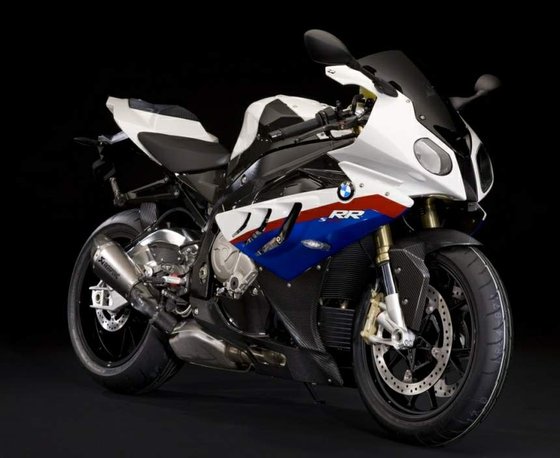
The S 1000 RR’s riding position leaned toward the track, with low clip-ons and high rearsets. The 820 mm (32.3 in) seat height accommodated taller riders, but the narrow tank made it manageable for shorter pilots.
On the Road
- Commuting: Firm suspension and a twitchy throttle made stop-and-go traffic a chore.
- Touring: The 17.5L (4.6 gal) fuel tank offered ~200 km (124 mi) range at pace—better suited to canyon carving than cross-country trips.
On the Track
- Sachs suspension: Fully adjustable 46mm forks and a monoshock provided razor-sharp feedback. Later models (2012+) revised damping for better mid-corner stability.
- Brembo brakes: Dual 320mm discs with radial calipers delivered 41.5m (134.5 ft) stopping power from 100 km/h.
Competition: How the RR Stacked Up 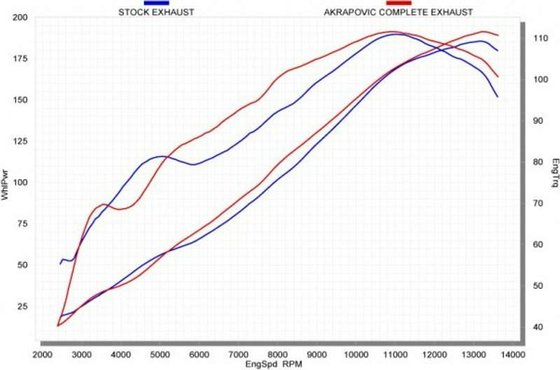
The S 1000 RR faced fierce rivals in the liter-class arena:
| Model | Power | Weight (wet) | Key Advantage | RR’s Edge | |---------------------|-------------|--------------|------------------------------|-------------------------------| | Yamaha YZF-R1 | 182 hp | 206 kg | Crossplane crank torque | Electronics, peak power | | Honda CBR1000RR | 178 hp | 200 kg | Handling precision | Acceleration, tech suite | | Suzuki GSX-R1000 | 185 hp | 203 kg | Value-for-money | Braking performance | | Ducati 1198 | 170 hp | 171 kg | Emotional V-twin character | Power-to-weight ratio |
The BMW’s blend of tech and brute force made it a favorite for riders who wanted MotoGP-level aids without sacrificing street usability. It lacked the Ducati’s soul or the Honda’s finesse but dominated in sheer speed and innovation.
Maintenance: Keeping the Beast Alive 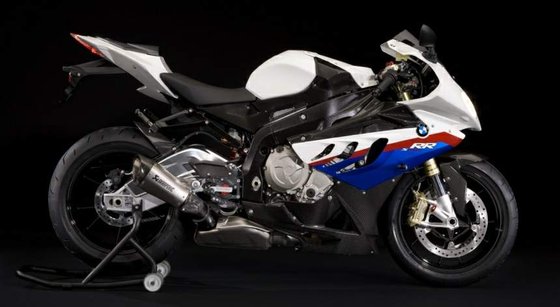
Owners praised the RR’s reliability, but its high-strung nature demanded attention:
Key Service Items
- Valve checks: Every 16,000 km (10,000 mi)—a complex job due to shim-under-bucket design.
- Chain adjustment: Frequent checks needed to manage the 17/45 sprocket setup’s aggressive wear.
- Cooling system: Flush every 2 years; watch for leaks at the radiators (common on track-abused bikes).
Upgrades & Tips
- Exhaust: Swap the stock system for an Akrapović slip-on (+5 hp, -3 kg).
- Suspension: Öhlins cartridges improved feel for aggressive track use.
- Tires: Pair with Michelin Power GP or Pirelli Diablo Supercorsa SP for grip.
At MOTOPARTS.store, we recommend:
- High-performance air filters to unlock hidden top-end.
- Lightweight lithium batteries to offset added accessories.
Conclusion: The Game-Changer 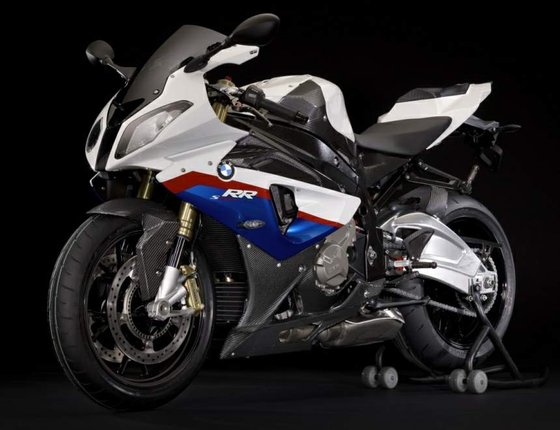
The 2008–2014 BMW S 1000 RR wasn’t just a motorcycle—it was a statement. It proved that a first-time superbike contender could outgun veterans through innovation alone. While later models refined its edges, this generation remains a testament to BMW’s engineering audacity. Whether you’re hunting apexes or aftermarket parts, the RR is a platform that rewards passion. As one journalist summarized: “It doesn’t just raise the bar—it launches it into orbit.”

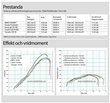
































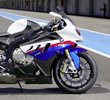





Specifications sheet
| Engine | |
|---|---|
| Stroke: | Four-stroke |
| Max power: | 143 kW | 192.0 hp |
| Max torque: | 112 Nm |
| Fuel system: | Electronic fuel injection (BMS-KP) with 48 mm throttle bodies |
| Lubrication: | Wet sump |
| Max power @: | 13000 rpm |
| Displacement: | 999 ccm |
| Max torque @: | 9750 rpm |
| Configuration: | Inline |
| Cooling system: | Liquid-cooled |
| Exhaust system: | 4-2-1 stainless steel with catalytic converters (EU-3 compliant) |
| Compression ratio: | 13:1 |
| Number of cylinders: | 4 |
| Valve configuration: | DOHC, 4 titanium valves per cylinder |
| Dimensions | |
|---|---|
| Wheelbase: | 1422 mm (56.0 in) |
| Dry weight: | 183 |
| Wet weight: | 204 |
| Seat height: | 820 mm (32.3 in) |
| Overall width: | 826 mm (32.5 in) |
| Overall height: | 1138 mm (44.8 in) |
| Overall length: | 2056 mm (80.9 in) |
| Ground clearance: | 165 mm (6.5 in) |
| Fuel tank capacity: | 17.5 L (4.6 US gal) |
| Drivetrain | |
|---|---|
| Final drive: | chain |
| Gear ratios: | ['1st: 2.647', '2nd: 2.091', '3rd: 1.727', '4th: 1.500', '5th: 1.360', '6th: 1.261'] |
| Chain length: | 118 |
| Transmission: | 6-speed constant mesh |
| Rear sprocket: | 45 |
| Front sprocket: | 17 |
| Electronics | |
|---|---|
| Battery: | 12V 10Ah maintenance-free |
| Riding modes: | ['Rain (150 hp)', 'Sport', 'Race', 'Slick (full power)'] |
| Quick shifter: | Standard (upshift only) |
| Instrumentation: | LCD dash with lap timer and gear indicator |
| Traction control: | DTC with lean angle sensor (optional) |
| Maintenance | |
|---|---|
| Rear tire: | 180/55 z-17 |
| Engine oil: | 10W-40 full synthetic |
| Front tire: | 120/70 z-17 |
| Brake fluid: | DOT 4 |
| Spark plugs: | NGK CR8EIX |
| Spark plug gap: | 0.8 |
| Tire pressures: | {'Rear': '2.5 bar (36 psi) solo / 2.8 bar (41 psi) with passenger', 'Front': '2.25 bar (33 psi)'} |
| Coolant capacity: | 1.9 |
| Fork oil capacity: | 1.2 |
| Engine oil capacity: | 3.5 |
| Oil change interval: | Every 5000 km or 2 years |
| Valve check interval: | 24,000 km (15,000 mi) |
| Valve clearance (cold): | {'Intake': '0.10-0.20 mm', 'Exhaust': '0.20-0.30 mm'} |
| Performance | |
|---|---|
| Top speed: | 299 km/h (186 mph) |
| 0-100 km/h: | 3.1 sec |
| CO2 emissions: | 132 g/km |
| Fuel consumption: | 5.7 L/100 km (41 mpg) |
| Standing ¼ mile: | 10.2 sec |
| Chassis and Suspension | |
|---|---|
| Frame: | Aluminum bridge-type frame with load-bearing engine |
| ABS modes: | ['Rain', 'Sport', 'Race', 'Slick (disengageable)'] |
| Rear brakes: | Single 220mm disc, 1-piston caliper (Optional Race ABS) |
| Front brakes: | Dual 320mm floating discs, 4-piston radial calipers (Optional Race ABS) |
| Rear suspension: | Aluminum swingarm with central shock, 125mm travel (4.9 in) |
| Front suspension: | 43mm USD fork, 125mm travel (4.9 in) |



